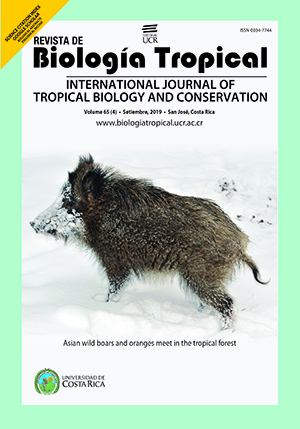Abstract
Abstract: The densities of the land crab Cardisoma guanhumi has been dropping for the past decades, as a result numerous management strategies, laws and regulations throughout the tropics have been developed to reduce population declines. The reasons for declines include: overfishing, habitat degradation and loss, and continued capture in Natural Protected Areas (NPA). In Puerto Rico, an admistrative order of 1999, regulates a closed season, prohibits the captures of crabs through the year from NPA and has a legal size for capture (64 mm). The goal of this research was to monitor spatial-temporal dynamics of captures for C. guanhumi after the implementation of the admistrative order. Crabs captured from thirty-one hunters in six communities surrounding the Jobos Bay Estuary (JBE) in south east Puerto Rico was studied over a period of 15 years, 2004 through 2018. The size (carapace width and length), sex and color were documented for 1531 crabs. There was significant difference in crab size through time and space. The smallest crabs with captured in the west of JBE and in the year 2004, while the largest crabs were captured in the west and in 2013. As expected smaller hunting areas had smaller crabs due to higher hunting pressure. Further, there was significant difference in crab color by size, smaller crabs were orange, intermediate size was brown and larger crabs were blue. Color of crab can therefore be used to determine legal limit. From 2009 to 2018 three percent of hunters captured crabs smaller than the legal-size limit. Although there was no significant relationship between climate (temperature, rainfall) and crab size, smaller crabs were captured in 2013-2016 during years of lower rainfall. Also, crab size increase from 2004 until 2013 coincided with mangrove recovery in the JBE. The laws and management strategies in Puerto Rico for the protection of crabs by size and prohibition in NPA, is not enough. Therefore, the impact of climate variability, sea level rise and anthropogenic pressures on crab habitat, therefore, warrants further investigation.
##plugins.facebook.comentarios##

This work is licensed under a Creative Commons Attribution 4.0 International License.
Copyright (c) 2019 Yogani Govender






